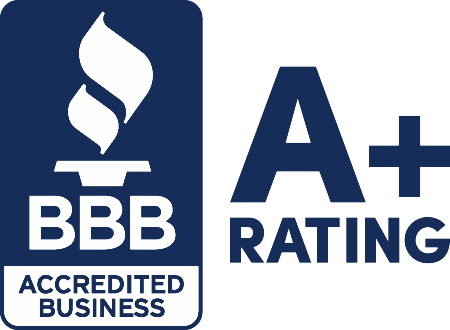What are Business Tradelines?
A tradeline is any credit account that appears on a credit report. In personal finance, this could be a credit card account, an auto loan, or a student loan. In the business world, business tradelines encompass vendor accounts, business credit cards, installment loans, and revolving accounts associated with your company.
Each tradeline carries tradeline data such as the credit limit, current balance, payment history, and credit utilization. These factors are used by credit scoring models, like the FICO credit score and those used by credit reporting agencies, to evaluate your credit health.
There’s a distinction between personal credit tradelines and business tradelines. While personal tradelines affect your personal credit reports through the three major credit bureaus (Experian, TransUnion, and Equifax), business tradelines impact your business credit report through agencies such as Dun & Bradstreet, Equifax Business, and Experian Business.
How much does a Tradeline boost Business Credit?
Adding tradelines to your credit history could increase your credit score by 20 to 100 points. The effect of a tradeline on your business credit score depends on several factors:
- The age of the account and your length of credit history
- Whether it shows an on-time payment history, late, or missed payments
- The credit utilization ratio
- Whether the account is in good standing
- The type of credit (installment vs revolving)
Adding a seasoned tradeline with timely payments, a low balance, and a high available credit limit can significantly impact your credit score, especially if you have a thin credit file or are trying to establish a credit mix.
How long does it take for Tradelines to post to a Credit Report?

So, how long does it take for tradelines to appear on a credit report? The answer varies depending on the credit bureaus and the creditor’s reporting cycle.
Typically:
- Tradelines may take 15 to 45 days to post after account activity.
- Authorized user tradelines may post within 30 days of being added.
- For installment credit, such as personal loans or auto loans, reporting may take one to two billing cycles.
The major credit bureaus and major business credit bureaus don’t all update simultaneously. Each creditor reports to the credit reporting agencies on their own schedule. This affects how soon the tradeline data will stay on your credit profile. For example, some business credit bureaus update monthly, while others update only when new account activity is reported.
Please note that new credit applications may result in a hard inquiry, which typically appears on your credit report within a few business days. But the actual tradeline (the open account) may not post until the first billing cycle is completed and a current payment status is reported. If you do not see new accounts on your business credit reports after 2 months, you should contact the company that offers the tradeline.
Consumer Credit Reports
New consumer credit accounts typically begin reporting to credit bureaus within one to two months after they are opened. You can obtain free copies of your credit reports from the three major credit bureaus.
What are the benefits of Business Tradelines?
Business tradelines are crucial for establishing business credit and maintaining a strong financial profile. They help demonstrate your company’s ability to manage credit accounts responsibly, make on-time payments, and maintain good cash flow.
As your positive credit history grows, so does your eligibility for higher credit limits, lower interest rates, and better business credit cards or financing options. Strong tradelines also help improve your overall credit health, demonstrating to lenders and suppliers that your business can manage debt responsibly.
What are the drawbacks of Business Tradelines?
Despite their advantages, tradelines come with risks. Late or missed payments can negatively affect your credit file and reduce your credit score. Some tradelines only report to one or two credit bureaus, limiting their impact.
Additionally, managing too many accounts can negatively impact your credit utilization if you don’t keep balances low. Relying on purchased tradelines or authorized user status may offer short-term benefits, but it could also be perceived as risky or manipulative by lenders.
Business Tradelines Pros & Cons
Pros:
- Build a strong business credit profile.
- Help establish an on-time payment history.
- Increase available credit and credit lines.
- Improve your credit mix and credit age.
- Strengthen cash flow and borrowing capacity.
Cons:
- Late payments can hurt your credit profile.
- Not all tradelines report to all credit reporting agencies.
- Overuse can increase your credit utilization ratio.
- Some vendors charge high fees for reporting.
How do you successfully Build Business Credit with Tradelines?
Successfully building business credit requires more than just opening accounts. It involves maintaining strong credit habits over time that signal financial responsibility and trustworthiness to lenders and credit bureaus.
Maintain Positive Payment History & Monitor Reports
On-time—or early—payments are the foundation of building strong credit. Every timely payment demonstrates your business’s ability to manage debt, boosting your business credit scores and increasing your borrowing power. For instance, consistently paying a vendor account before its due date can accelerate your credit growth, especially if that vendor reports to the major business credit bureaus. Equally important is reviewing your business and personal credit reports at least quarterly. This helps you identify and correct any inaccurate or harmful information before it negatively impacts your credit. Consider using a credit monitoring service to stay alert to score changes and maintain your overall credit health.
Keep Credit Utilization Low
One of the most overlooked yet critical aspects of credit management is your credit utilization ratio—the percentage of your total available credit you’re currently using. Aim to keep this under 30%. For example, if you have a $10,000 credit line, keeping your balance at or below $3,000 signals to lenders that you’re not overextended and can handle larger lines of credit in the future.
Gradually Diversify Your Credit Mix
To maintain a strong business credit profile, diversify your credit by using a mix of account types, including revolving credit (such as business credit cards), installment credit (like equipment loans), and vendor accounts. Don’t open too many accounts at once; instead, add new tradelines gradually as your business grows. This helps improve your credit mix, reduce overall utilization, and ensure each new tradeline matures over time, boosting your score more effectively. However, opening too many accounts too quickly can appear risky and potentially lower your score.
By consistently applying these practices—making timely payments, managing your balances, monitoring reports, and diversifying your credit—you can build a resilient credit profile that supports long-term growth and financial success.
Frequently Asked Questions
Here are the most frequently asked questions about how long it takes for business tradelines to be posted to your credit report.
What are some of the best Tradelines to Build Business Credit?
Not all tradelines are created equal when it comes to building your business credit. To be effective, a tradeline must be reported to at least one of the major business credit bureaus, including Dun & Bradstreet, Experian Business, or Equifax Business. Before opening any account, always confirm that the lender or vendor reports payment activity to the relevant credit bureaus. Below are some of the most reliable and accessible tradeline options that can help establish or strengthen your business credit profile.
Net 30 Vendor Accounts (e.g., Uline, Quill, Grainger)
These are among the easiest tradelines to secure, especially for new businesses without established credit. A Net 30 account gives your business 30 days to pay for purchased goods, and companies like Uline, Quill, and Grainger are known to report to major business credit bureaus. These accounts are ideal for buying office supplies, packaging materials, or industrial products while building a positive payment history. Making consistent, early payments helps demonstrate responsible credit behavior and supports the growth of your business credit report.
Business Credit Cards That Report to Business Bureaus
Opening a business credit card is another excellent way to create a revolving tradeline. Look for cards that specifically report to business credit bureaus, not just personal ones. Cards from issuers such as Capital One, Chase, and American Express may be reported to Experian Business and Dun & Bradstreet. These cards can also help manage cash flow and credit utilization, especially when balances are kept low and payments are made on time.
Installment Loans from Business-Friendly Lenders
Installment loans enable businesses to borrow a lump sum and repay it over a predetermined schedule, thereby creating a healthy credit mix. Some financial institutions and online lenders report these installment loans to business bureaus.
These accounts contribute to your length of credit history and show your ability to manage longer-term debt obligations effectively. They are handy for businesses looking to finance equipment, marketing, or inventory purchases.
Credit-Building Programs
Some companies offer specialized business credit-building loans where the funds are held in a locked savings account as you make fixed monthly payments. These programs are designed to report your activity to one or more business credit bureaus, helping improve your credit profile while also building savings. It’s an excellent option for small businesses that want to improve credit while maintaining financial discipline and a good standing payment history.
When choosing a tradeline, always ask the provider which credit bureaus they report to and how frequently. Some only report to one, and others may delay reporting until several payments have been made. The more proactive and transparent a provider is about their credit reporting, the more confidently you can use their tradeline to boost your business credit.
Can I purchase Business Tradelines?
Yes, it’s possible to purchase tradelines, often by being added as an authorized user to someone else’s account. However, this is more common in the personal credit world than in the business world. Being added as an authorized user typically gives you credit for the entire account history. You can ask a family member to add you as an authorized user to improve your credit history. Any negative information regarding the primary cardholder’s account will also appear on the authorized user’s credit report. Negative tradeline information can remain on your credit reports for up to seven years.
Purchased tradelines can give your profile a quick boost, but they come with risks. They’re often expensive, not consistently effective, and may violate the terms of some credit scoring companies. Instead of buying access to another’s primary cardholder account, it’s usually safer and more sustainable to build credit through your own activity. Having primary tradelines is the most effective way to build your credit.
What are the biggest mistakes to avoid when Building Business Credit?
While building business credit is one of the smartest steps a company can take to secure better financing options and long-term growth, many business owners make avoidable errors that slow their progress or even damage their credit profile. Knowing what not to do is just as important as knowing what to do. Here are some of the most common mistakes to steer clear of when establishing and growing your business credit:
- Failing to Separate Personal and Business Credit: Mixing personal and business finances can blur your credit history, increase personal liability, and limit your ability to build a distinct business credit profile.
- Not Registering with Business Credit Bureaus: If you don’t register with agencies like Dun & Bradstreet (by obtaining a D-U-N-S Number), your business may not have a credit profile—even if you’re paying vendors or using credit.
- Working with Vendors That Don’t Report: Not all vendors or lenders report payment activity. If you’re using credit accounts that don’t report to the business credit bureaus, you’re missing opportunities to build your credit.
- Missing or late payments Just like with personal credit, late payments or missed payments can significantly damage your business credit score and your reputation with lenders and suppliers.
- High Credit Utilization Using too much of your available credit—even if you pay on time—can lower your score. Aim to keep your credit utilization ratio below 30%.
- Applying for Too Much Credit at Once: Rapidly opening multiple credit accounts or submitting too many applications can raise red flags for lenders and temporarily drop your credit score due to hard inquiries.
- Neglecting to Monitor Your Business Credit Report: Many business owners fail to check their reports regularly, missing errors, outdated information, or fraud that could harm their credit standing.
- Closing Old Accounts Too Soon: Older accounts help improve your credit history length, a key factor in credit scoring. Closing them can shorten your profile and lower your score.
- Using Personal Guarantees Excessively: Relying on personal guarantees for business credit exposes your personal credit to risk and may hinder your business from establishing its own creditworthiness.
- Ignoring Your Credit Mix: A healthy mix of installment loans, vendor accounts, and revolving credit demonstrates to lenders that your business can effectively manage different types of credit.
Avoiding these mistakes can save your business from credit setbacks and help you build a solid, long-lasting business credit profile. Establishing credit the right way takes time, but the payoff is greater access to funding, better terms, and stronger relationships with lenders and vendors.
How Long Does It Take for Tradelines to Post? – Final Thoughts

Understanding how long it takes for tradelines to appear on a credit report is crucial to building a solid business credit foundation. Most tradelines post within 15 to 45 days, depending on the type of account and the credit reporting agencies involved. You can speed up the process by choosing tradeline providers known for prompt reporting and maintaining timely payments on all your accounts.
Tradelines can be powerful tools when used responsibly, helping you boost your credit score, improve cash flow, and access better financing options. But like all credit-building strategies, they require patience, good habits, and a clear understanding of how credit tradelines impact your business credit profile. With the right approach, you can build and maintain a strong, trustworthy credit identity for your business.
Contact us if you have more questions about building business credit or to apply for a small business loan. Our alternative financing experts can help you find the best funding options to fuel growth.













